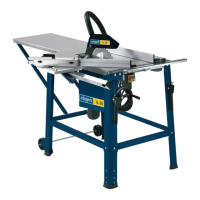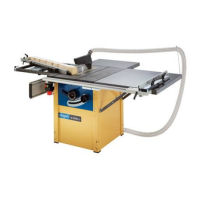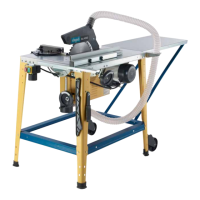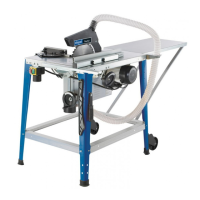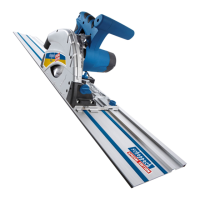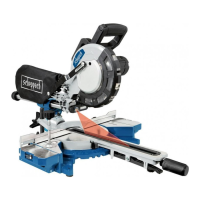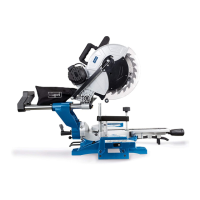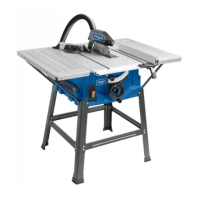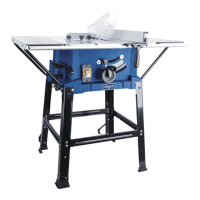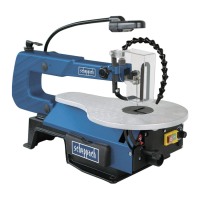28 english
Maintenance
Always switch off the motor and disconnect the plug from
the power supply prior to any maintenance and cleaning
work.
The following maintenance points should be checked on the
scheppach ts 4020 circular saw blench.
• Checkthe belt tensionafterapproximatelyoneoperating
hour; retension if necessary.
For this purpose Open the upper side wall. By uniform
adjustmentofthefasteningnutsonthemotor,adjustthe
necessarybelttension.Afterthisrstinitialadjustment,
check the belt tension at regular intervals.
• Occasionally,oilthe roller chainandmovingparts(height
andangleadjustment).
•Ensurethatthebench surface is always free of resin.
•Ifthecircularsawbenchisnotconnectedtoanextractor,
then it will be necessary to remove the saw dust and wood
chips that accumulate in the protective blade box. This is
important to ensure trouble- free ejection of the saw dust.
Remove the left blade-slot insert. If suction System is not
connectedwhenworking,theheightandangleadjustment
range may be restricted due to chip accumulation.
All protection and safety devices must be replaced after
completing repair and maintenance procedures.
•Thesawprotectionboxmustbeclearedoccasionallyof
wood shavings and saw dust so that shavings do not jam
when ejected.
•heheightandangularadjustmentareamaybereducedby
shaving deposits. Remove the left bench inlay and clean the
adjustment area.
Electrical connection
The installed electric motor is com- pletely wired ready
for operation.
Yhe customer‘s connection to the power supply system, and any
extension cables that may be used, must conform with local
regulations.
Motor braking unit
The scheppach machine is fitted with an automatic motor
braking unit which becomes effective as soon as the driving
motor is switched off.
Thesawblademuststopmaximal10secondsafterswitching
itoff.Poofdaily!
Ifittakeslonger,donotusethemachineanymore.
lmportant information
The 230 V / 50 Hz and 400 V / 50 Hz electric motor is designed
for the S6 / 40% operating mode.
The motor automatically switches off if it is overloaded. The
motor can be switched on again after a cooling- down period
(varies timewise).
Faulty electrical connecting leads
lnsulation damage often occurs at elec- trical connecting
leads.
Causes include:
•Pressuremarkscausedwhenconnectingleadsarerun
through windows or the cracks of doors.
•Foldscausedbytheimproperattachmentofrunningof
the connecting leads.
•Cutsresultingfromthecrossingoftheconnectinglead.
•lnsulationdamagescausedbytherippingoutofthe
connecting lead from the wall socket.
•Cracksduetotheageingoftheinsulation.
Faulty electrical connecting leads such as these may not be used
and are highly dangerous due to the insu- lation damage.
Check electrical connecting leads regu larly for damage.
Ensurethattheconnectingleadisnotattachedtothemains
supply when you are checking it.
Electricalconnectingleadsmustcorrespondtotherelevant
VDEandDINregulations.Onlyuseconnectingleadswith
thecodeH07RN.
The type designation must be printed on the connecting lead
by regulation.
Single-phase motor
• The supply voltage must be 230 volt - 50 Hz.
•Extensionleadsupto25minlengthmusthavea
crosssectionof1.5mm2.Extensionleadswhoselengthis
over 25 m must have a cross-section of at least 2.5 mm2
•Themainsconnectionisfusedwitha16Aslowblowfuse.
Three-phase motor
The 400 V / 50 Hz electric motor is designed for the S6 / 40%
operating mode.
•Thesupplyvoltagemustbe400volt50Hz.
•Themainsconnectionandtheextensionleadmusthave
5wires=3P+N+PE.
•Theextensioncablesmusthaveaminimumcrosssection
of 1.5 mm2
•Themainsconnectionismaximallyfusedwitha16Afuse.
•Thephasesequencemustbecheckedifthemains
connection or the location is changed. The polarity must
bechanged,ifnecessay(wallsocket)
Connections or repairs on the electrical equipment may only
be carried out by an electrician.
Please give the following information if you have any enquiries.
•Motormanufacturer
•Kindofcurrent
•Machinetypelabeldata
If your are sending back the motor, always send the complete
drive unit with the switch.
2-3mm
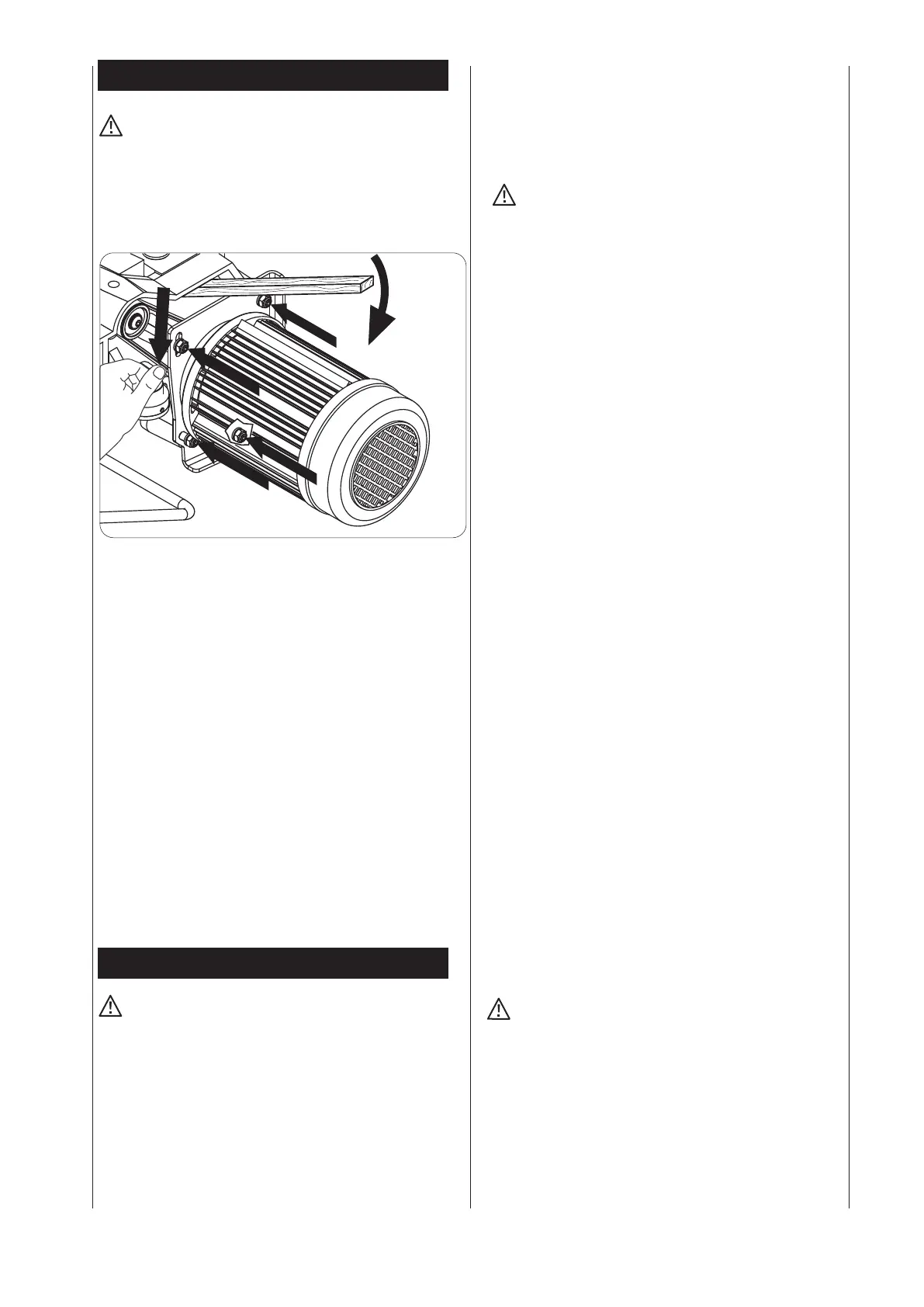